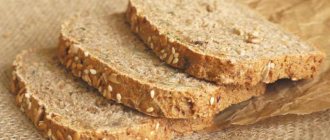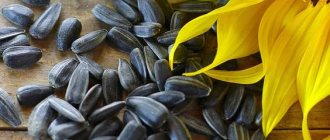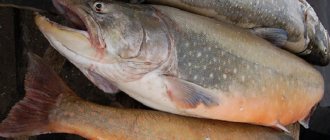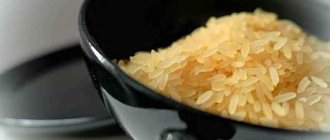Chemical composition of shrimp
Although the initial attitude towards shrimp meat was unfair, it was considered harmful, the study of the chemical composition and properties emphasized the value of the raw material. Crustaceans are recognized suppliers of iodine among other marine life.
Shrimp also contain:
- essential amino acids;
- compounds of cobalt, manganese, molybdenum;
- microelements magnesium, sodium, calcium, potassium;
- provitamin A, vitamins D, E, C, group PP, B.
Shrimp meat is recognized as a storehouse of healthy protein, which not only maintains body muscle tone, but is also necessary for the formation of collagen, which maintains elastic, young skin. And the mineral balance, the presence of Omega-3 acids, and other properties of shrimp prevent the development of many diseases, strengthen bones and the circulatory system.
Nutritional value and calorie content of shrimp
Marine arthropods belong to dietary products, the calorie content of which often depends on the degree and type of processing.
| Cooking method | 100 g |
| Raw meat | 96 kcal |
| Boiled | 95 kcal |
| Breaded fried | 242 kcal |
| Baked with sauce | 175 kcal |
| For a couple | 99 kcal |
| Lightly toasted | 116 kcal |
| Pickled | 60–75 kcal |
The calorie content of the popular king and tiger prawns is not much different: 86.9 and 90 kcal per 100 g, respectively.
The benefits of shrimp meat are complemented by the opportunity to eat deliciously without harming the body through hunger strikes or monotonous and nutrient-poor foods.
Shrimp in weight loss diets
By the way, about diet: losing weight on shrimp is quite possible. 100 g of purified product contains from 75 to 100 kcal and only 5% polyunsaturated fats. So if you boil them rather than fry them in oil, you simply won’t find a better source of protein. White tender meat is rich in zinc and selenium.
These elements are not only responsible for the metabolic rate, but also help keep hair and nails healthy, so dishes with shrimp are recommended for anyone who is experiencing seasonal hair loss.
We can also recommend shrimp to those who have not yet given up the addiction of smoking. This is practically the only type of meat that has an antioxidant effect. In addition, a serving of shrimp perfectly suppresses hunger and does not add extra calories, which is important if you have already given up cigarettes, but still feel cravings for snacks to relieve stress.
There is a shrimp diet that allows you to improve your figure and get the additional bonus of improving the condition of your hair and skin. With this diet, you need to eat up to 350 g of boiled shrimp meat per day. If you absolutely want fried, then no more than 100 g and only in vegetable oil.
You can eat vegetables with shrimp, but not potatoes, corn or beans. Greens are allowed in unlimited quantities. You can eat citrus fruits, wild berries and green apples. Liquids you can drink include water, skim milk, apple juice, pineapple juice, pomegranate juice, and citrus juices.
The diet is designed for 7-10 days.
The shrimp diet is not suitable for those who suffer from chronic allergic diseases or liver diseases. Problems with the thyroid gland are a good reason to carefully discuss the need for such a diet with your doctor.
Share the article with your friends on social networks!
More on the same topic:
Comments (0)
How much cholesterol is in shrimp?
Shrimp contain a large amount of cholesterol, being the leaders among seafood in this property. 100 g of crustacean meat contains 160–190 mg of cholesterol, but no more than 2.2 g of fat. These properties are an indication that the benefits of eating arthropods for many are greater than the harm. After all, they do not create conditions for the synthesis of cholesterol in the human body. On the contrary, healthy unsaturated acids and the absence of saturated fats provoke cleansing of blood vessels.
Important! In reasonable quantities, even bad cholesterol is necessary for the body to function normally. It promotes the proper functioning of the brain, digestive system, hormones; its properties are necessary for the formation of cell membranes.
How to choose shrimp
shrimp benefits and harm If you adhere to certain criteria when choosing the “right” shrimp, then in the end it will not be difficult for you to provide yourself with a high-quality and tasty product, from which you will only benefit. So, if her head is dark in color, then this means that she is bad and is no longer worth buying or eating. Look carefully at the color of the body. If you find light stripes, be sure that it is frozen. It is also important to pay attention to the dryness or moisture of the shell. If it is dry, then the shrimp is already old. The shell should be slightly damp. A quality shrimp should have a pink body color. By following these rules, you will significantly reduce the possible harm from eating shrimp.
Shrimp contain a substance called astaxanthin in their shell. It belongs to the so-called carotenoids. It gives the shrimp a bright pink color. It is believed that the brighter the seafood, the better and tastier it is. But don't rush to conclusions. Some fish farm owners use it to artificially color the meat of fish and other inhabitants of their farms.
Useful properties of shrimp
The benefits of shrimp for the human body have been studied not only theoretically, but also experimentally. When cooked correctly, seafood is very tasty, which is a pleasant bonus to its valuable properties.
Consumption of marine crustaceans is recommended:
- during a diet;
- to strengthen muscles and bones;
- with immunodeficiency;
- in the process of recovery from a protracted illness.
It is enough to consume 100 g of the product as part of a salad so that the body receives the daily requirement of zinc, selenium and iodine necessary for normal functioning.
The benefits of shrimp for women
Women need to include healthy seafood in their diet. Thanks to their properties, crustaceans will make your hair thicker, your nails stronger, eliminate mood swings, and normalize hormonal levels within a few days of consumption.
We recommend reading: The benefits and harms of Sladis
The mineral composition will help improve metabolism and get rid of obesity. It is recommended that pregnant women consume shrimp in normal quantities to maintain their health, supplying the fetus with all the vitamins and microelements necessary for development. During and after menopause, seafood, due to its beneficial properties, will become the most accessible source of microelements.
What are the benefits of shrimp for men?
The benefits of shrimp for men were recognized back in the days of Ancient Rome. They were used as a potency stimulant. Due to its low calorie content, food is quickly digested and does not burden the stomach, allowing amino acids, selenium and zinc to stimulate testosterone biosynthesis, positively affecting sexual function.
Advice! To achieve a positive result, you need to ensure that the seafood used is fresh. They should smell and look good before cooking.
The product will be harmful if it has been frozen repeatedly, as evidenced by properties such as blackened heads, odor and unhealthy spots.
Shrimp for the elderly
The health benefits and harms of shrimp for older people are controversial.
Product in small quantities:
- strengthens bones;
- protects against infections;
- normalizes cholesterol levels;
- stabilizes blood pressure.
That is, arthropod meat will help cope with most problems typical of a certain age, unless there are contraindications from the attending physician caused by the properties and composition of seafood or individual intolerance.
The benefits of shrimp for the body
Shrimp are low in calories but high in nutrients
The chemical composition of shrimp is impressive. Shrimp are fairly low in calories, with about 90 calories per 100-gram serving, and no carbohydrates at all. Approximately 90% of the calories in shrimp come from protein and the rest from fat.
Plus, the same serving size provides more than 20 different vitamins and minerals, including 50% of an adult's daily requirement for selenium, a mineral that may help reduce inflammation and improve heart health.
Nutrients at a glance per 85 gram serving:
Calories : 84 Protein : 18 g Selenium : 48% Daily Value Vitamin B12: 21% Iron : 15% Phosphorus : 12% Niacin : 11% Zinc : 9% Magnesium : 7%
Shrimp is also one of the best sources of iodine, an important mineral that many people are deficient in. Iodine is essential for proper thyroid function and brain health.
Is it possible to give shrimp to children and at what age?
Pediatricians' opinions on the benefits of shrimp in children's diets differ only with regard to the age at which the product can be included in the diet. Most of them insist on 3-4 years, and then the baby’s portions need to be increased gradually. For the first time, after consulting with a pediatrician or doctor, the child should try one chopped shrimp, after which he should be supervised for at least 24 hours.
The damage caused by crustaceans is evidenced by:
- sudden loose stools;
- labored breathing;
- the appearance of rashes;
- causeless runny nose.
If there are no contraindications from a doctor or an allergic reaction, after reaching 5 years of age, the child is allowed to give no more than 30–50 g of shrimp per day, which is equivalent to eating 100 g of fish or veal.
The portion for a teenager increases to 70–80 g. Dishes prepared for children are flavored with sour cream sauce or lemon, but not with spices, which enhance their properties and can cause harm to the child.
Recommendations for use
If the product is in shell, it will need to be peeled . To do this, first the head is torn off, then the shell is removed, starting from the wide end, moving towards the tail. The legs will come off when the “armor” is removed. The esophagus is then removed. To do this, use a sharp knife to make a cut along the back and pull out the dark vein.
Shrimp are not eaten raw , and of all the ways to prepare them, the simplest is boiling. The main thing is to do it correctly so that they do not lose their taste and do not lose useful components.
If you overdo it and overcook, then instead of tender, tasty meat you can get “rubbery” pieces of an incomprehensible taste. To make it tasty, the seafood must be dipped in boiling water, which is pre-salted and spices are added.
Cook until the crustaceans float to the surface (usually 3–5 minutes) , turn off and set the pan aside for a quarter of an hour. After the time has passed, the delicacy is taken out, sprinkled with olive oil, and flavored with spices.
Before eating, heat boiled-frozen crustaceans and season them with spices. First, they are washed with running cold water. There is no need to defrost - just wash off the ice glaze and rinse off any possible debris. Cleaned crustaceans are immersed in boiling water with spices for a minute . If they are in the shell, they should remain in boiling water longer - about two minutes.
Store the product frozen, do not defrost in advance. If you are going to cook, immediately before cooking, you need to remove the crustaceans from the freezer, wash off the ice shell and immediately put them into processing. You need to prepare such a volume that it is enough for one time.
It is better to eat protein foods in the afternoon . Shrimp will be a good dish for lunch or dinner. Uncleaned specimens are eaten by hand. If the crustaceans are completely ready to eat, use a fork. The neck, which makes up 33–45% of the carcass weight, is eaten.
When including shrimp in your diet when losing weight, you can eat up to 300 g per day if combined with green vegetables. For diabetics, the standards are more limited - no more than 100 g per day once a week and only after consultation with your doctor. Healthy people can consume 100–200 g daily.
From this video you will learn even more interesting facts about the dangers and benefits of shrimp and other seafood:
Are marinated shrimp healthy?
Marinated shrimp contain the least amount of calories without losing their beneficial properties during cooking. They contain the same microelements, protein and vitamins as fresh raw materials. When consumed in this form, dietary arthropod meat serves as a natural protector of the body, strengthening it and improving resistance to disease.
Advice! Marinated crustaceans will acquire an even better taste without loss of quality if you keep them in the refrigerator for about a day before serving. During the cooking process, bay leaves, olive oil, and herbs are used to enrich the taste of the dish.
Features of eating shrimp for diseases
The composition of beneficial crustaceans includes a unique antioxidant astaxanthin, which exceeds the effectiveness of similar substances found in fruits. It protects the body from premature age-related destruction, neutralizes stress, and helps treat arthritis, gout, rheumatism and other common diseases. Moreover, the benefits of king prawns and smaller specimens are the same.
We recommend reading: Curry: beneficial properties and contraindications
For diabetes
People suffering from diabetes are recommended to consume shrimp. Iodine from arthropod meat will strengthen the body and help internal organs function properly. The dietary product is easily digested and cleanses the body of food waste and toxins. The daily portion of shrimp should not exceed 100 g, since the abundance of cholesterol combined with minerals can neutralize the effects of medications taken, causing harm to health.
For pancreatitis
Treatment of the pancreas is inextricably linked with adherence to a strict diet and certain dietary restrictions. During an exacerbation of pancreatitis, it is better to avoid marine crustaceans. After normalization of indicators, the diet is replenished with healthy shrimp as an ingredient in cutlets, soufflé, and puree soup.
For gastritis and stomach ulcers
The reasons that force you to refuse treats if you have a stomach ulcer or gastritis due to the harm they cause are:
- exacerbation of the disease;
- increased acidity;
- allergic reaction;
- improper preparation.
Only boiled shrimp, served without excess salt, spices, or lemon juice, which will lead to irritation of the stomach walls and increased secretion of gastric juice, will be beneficial. Served in a salad with boiled peas and a variety of vegetables, steamed or boiled shrimp will only bring benefits due to their properties.
Shrimps
What are shrimps, benefits and harms for the human body, as well as what medicinal properties do they have and what exactly are these crustaceans useful for? These questions often arise among those who care about their health, lead a healthy lifestyle and show interest in traditional methods of treatment. And this interest is understandable. Maybe in this article, to some extent, you can get an answer to these questions.
So here it is:
Shrimp are small crustaceans that can live in both salt and fresh water. They, like other seafood, contain many minerals and vitamins that are beneficial to the body, and their protein is well absorbed.
Shrimp are small, swimming, decapod crustaceans that are widely distributed throughout the world, in both freshwater and saltwater. Their sizes usually range from 2 to 30 cm. More than 100 species of shrimp are found in the Far Eastern seas of Russia.
They are usually sold sorted simply by size. The larger they are, the more expensive they are. Small, only 3-7 cm in length, and inexpensive include deep-sea shrimp, which, for the most part, are boiled freshly caught and frozen.
— Cold-water shrimp. More common for consumption. Although, compared to warm water ones, they are somewhat smaller. Among large warm-water shrimp, the most common are tiger shrimp (in particular, black tiger shrimp).
— Herbal chilim is the shrimp that we usually cook for beer. In addition to them, there are also king, tiger and Far Eastern shrimp, which are larger in size.
— Serrated shrimp, king prawns or ahumbo. Quite large and fleshy, up to 20 cm long, imported fresh or boiled from Asia and Mexico. Deep freezing does not affect their quality. Considered a delicacy. Weigh up to 15 pieces per pound.
- Warm water shrimp. Lives in the southern seas. Quite meaty. They only eat tail meat.
- White shrimp. They eat tails. Often confused with scampi (langoustines). Imported from China and Mexico.
— Brown shrimp. Brown shrimp is harvested in the Gulf of Mexico, along the Atlantic coast of North America, and along the east and west coasts of Mexico. Their shell has a light brown or reddish tint, becoming light red during heat treatment.
— Dwarf lobsters, or imperial grenades, are younger relatives of true lobsters. They are often incorrectly called giant shrimp. True dwarf lobsters, 15-20 cm long, can be distinguished by long narrow claws and a wide tail with a fan-shaped fin.
Shrimp can be pink, white-blue and brown in color.
How to cook shrimp
Shrimp are mostly sold frozen, so it is important to properly bring them to an edible state.
The beneficial properties of the product will be preserved if the following rules are observed:
- Thawing should occur gradually, over about 10–12 hours.
- It is prohibited to use a microwave to quickly achieve results.
- A frozen delicacy thrown into hot water loses its value.
- Shrimp spoil easily, which makes it impossible to leave them at room temperature for a long time.
It is best to resort to gradual defrosting in the refrigerator, gradually lowering it from the top shelf into the lower vegetable compartment, or placing it in a colander in a pan of cold water, changing it every 20-30 minutes.
Advice! Before cooking, the benefits increase if the shrimp broth is drained and the shrimp themselves are dried with a paper towel. When choosing them in a store, it is better to give preference to unpeeled crustaceans.
Harm of shrimp and contraindications
Like any healthy seafood, crustaceans can cause harm if consumed in excessive quantities. The danger is posed by cholesterol and heavy metals, which are becoming more abundant in sea waters every year. Many people suffer from seafood intolerance due to excess protein in them, which leads to problems in the gastrointestinal tract and allergic rashes. Shrimp grown on private farms, where hormonal drugs, growth stimulants, and antibiotics are used to achieve quick results, can cause particular harm.










